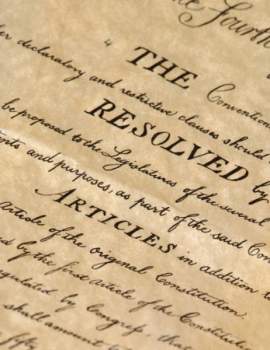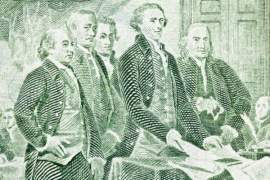
An Overview of the Federalist Papers

Popular In Constitution
Purpose Of Lifetime Appointment And Pros And Cons Enumerated Powers Bicameral Legislature Background Article 3 Of The Constitution We The People 1st Amendment Who Wrote The Constitution Judicial Review Equal Protection Clause Three Fifths Compromise 10th Amendment 5th Amendment
The Federalist Papers were a vehicle to promote the ideals of the Constitution, while garnering the support for its ratification throughout the American colonies. Only twelve years since declaring their independence from England in 1776, the newly-autonomous American colonies, renaming themselves the United states of America, were still without a stable form of government. Though several fleeting governing bodies were put into place, such as the Continental Congress as well as the Articles of Confederation, none of the initial gubernatorial endeavors had a substantial amount of staying power. The Federalist Papers were constructed as a means to counteract absolute power of a single governing body and reshape the constructs of the European gubernatorial model - monarchy.
Prior to the independence of the United States of America in 1776, monarchical rule - the consolidation of power under a single governing body - was commonplace throughout the world. Leaders governing through the employment of absolute power, such as Napoleon, Caesar, and even King George II, were heralded and lauded. The authors of the Federalist Papers sought out to ensure that the collective interests a nation’s citizens would be the primary concern of any newly-appointed governing body.
Since gaining their independence from the British Monarchy in 1776 just twelve years prior, the American colonies still had yet to establish an accepted form of government that would counter the previous monarchical rule under which they had existed at the hands of British monarch King George II. Hamilton, Madison, and Jay took advantage of the dissatisfaction shared by the inhabitants of the American colonies by presenting a framework of governmental process and structure found in the Federalist Papers that contradicted the maxims of a monarchy.
In September of 1787, the Constitution was accepted by the Confederation Congress, the acting government at the time. After approving the Constitution, the document was disseminated to each of the 13 individual states for consideration. After reviewing the document, the representatives of each respective state would be asked to decide whether or not they were in favor of the installment of the Constitution as the new dogmatic doctrine under which the United States would be governed. Hamilton, Madison, and Jay created the Federalist Papers in order to serve as a textual accompaniment to the Constitution, advocating the benefits of its ratification.
The essays contained persuasive speech coupled with formulaic outlines and descriptions of the principles introduced in the Constitution. The creation of a democratic governing body, whose concern would be the welfare of its citizens, was the main tenet that the authors of the Federalist Papers had hoped to portray. Within the first paragraph of document, the authors of the Federalist Papers assigned the word ‘union’ to the United States of America in order to illustrate the deconstruction of inequality between a governing body and its citizens.
The authors of the Federalist Papers were aware that the wake of the American Revolution was an ideal time to advocate for an alternate form of government. By strategically contrasting the totalitarian aspects of a failed monarchy with the optimism of a democratic nation, the Federalist Papers were both informative and persuasive.
NEXT: Federalist Papers 10





















